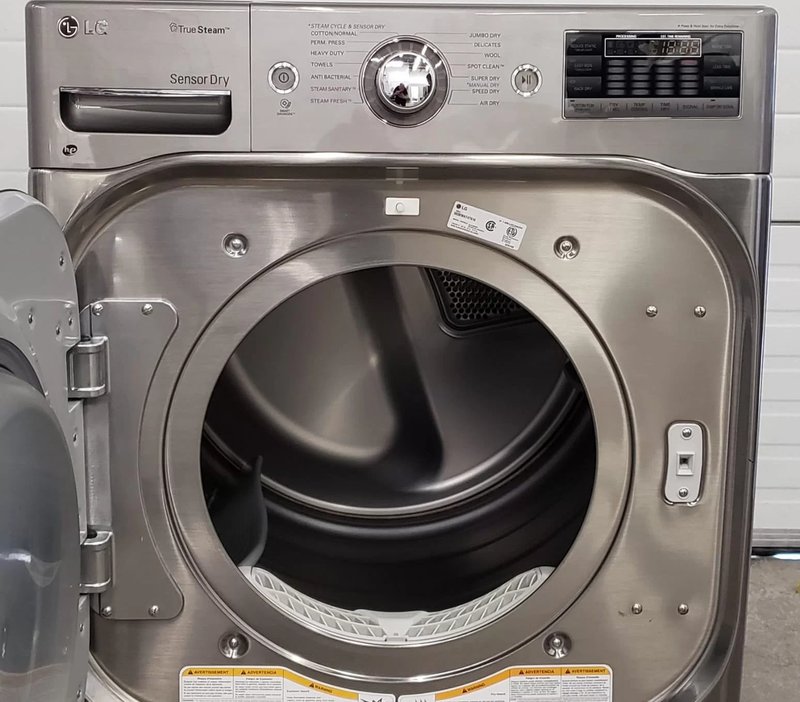
Ignoring such signals from your dryer might seem like a tempting option, especially when you’ve got a mountain of laundry to tackle. But, hang tight—leaving this error unattended could lead to bigger problems down the road. Consider it like ignoring strange noises in your car; it might keep running for now, but those noises are hints that something needs fixing. As with any appliance, staying proactive rather than reactive can save you money and headaches in the long run.
Understanding the E1 Error Code
Now, let’s unpack what this E1 error is all about. Essentially, the E1 error code is your LG dryer’s way of telling you there’s an issue with the thermistor or the temperature sensor. Imagine the thermistor as a little thermometer inside your dryer, keeping track of how hot it’s getting. If it isn’t working right, your dryer can’t measure the temperature correctly, which might mean things aren’t drying as they should—or worse; they could overheat.
This can happen due to a couple of reasons. It might be that the thermistor just went faulty over time, like any other electronic part, or there might be a problem with the wiring or the control board. Sometimes, it’s just a bit of lint clogging things up where it shouldn’t be. Keeping your dryer clean and well-maintained is like brushing your teeth—preventing problems rather than facing them head-on later.
If the thermistor is malfunctioning, your dryer might not regulate the heat correctly. This can lead to your clothes being left damp after cycles—or even worse, your dryer might overheat, which is a huge safety hazard. So, the best next step is to diagnose and fix the issue rather than letting it linger.
Consequences of Not Fixing the E1 Error
You might be thinking, “Can I just keep using my dryer with this error?” Here’s the scoop: it’s not a good idea. If you don’t address the E1 error, you’re likely shortening the lifespan of your dryer. Just like driving on a spare tire isn’t meant to be permanent, using a dryer with a known issue can push it closer to breaking down completely.
Moreover, an unchecked error can lead to poor drying performance. You might find yourself running more cycles to get your clothes dry, which not only wastes your time but also hikes up your energy bills. Over time, these costs add up and could be way more than what it would have cost to fix the problem in the first place.
Additionally, there’s the risk of overheating. In the worst-case scenario, an overheating dryer can pose fire risks, making it critical to tackle this error promptly. Safety should always be the top priority when dealing with any household appliance, and dryers are no exception.
How to Fix the E1 Error
Alright, so you’re convinced that fixing the error is important. How do you go about it? First, you’ll want to unplug your dryer to ensure safety—think of it as a “reset” button. Once that’s done, the logical step is to inspect the thermistor and wiring. If you’re feeling a bit adventurous and handy, you can refer to your dryer’s manual for guidance on accessing these parts. Make sure to look for anything that looks out of place or damaged.
If you’re not comfortable poking around inside your dryer, calling in a professional is a smart move. They can quickly identify whether the thermistor needs replacing or if there’s a deeper issue at play. It’s a bit like calling a plumber for a leaky sink—it might cost you upfront, but it saves you the hassle and future repairs.
Remember, a little maintenance goes a long way. Regularly cleaning the lint trap and checking vents can prevent many issues from cropping up in the first place. Keeping an eye on the general condition of your dryer will help catch any problems early, minimizing downtime and ensuring smooth operation.
Preventative Tips to Avoid Further Errors
Now that you’re equipped with the know-how to fix the E1 error, let’s chat about keeping your dryer healthy moving forward. Regular maintenance is your best friend here. Make it a habit to clean the lint filter after every use—this simple step goes a long way in preventing clogs and ensuring efficient operation.
Check your dryer’s vent hose and the area around it. Any blockages there can impede airflow, causing your dryer to work harder than it should. Think of it like a chimney; if it’s clogged, smoke can’t escape, so keeping pathways clear is essential.
Also, consider running a self-diagnosis if your dryer model offers that feature. It’s like giving your appliance a mini-checkup to ensure everything’s ticking along nicely. Staying proactive means fewer surprises down the road, giving you more peace of mind in the long run.
So, there you have it! When it comes to dealing with LG dryers and their error codes, staying informed and acting promptly can save a lot of trouble. With these tips and a little elbow grease, you can keep your dryer running smoothly and efficiently, safeguarding it against future glitches.